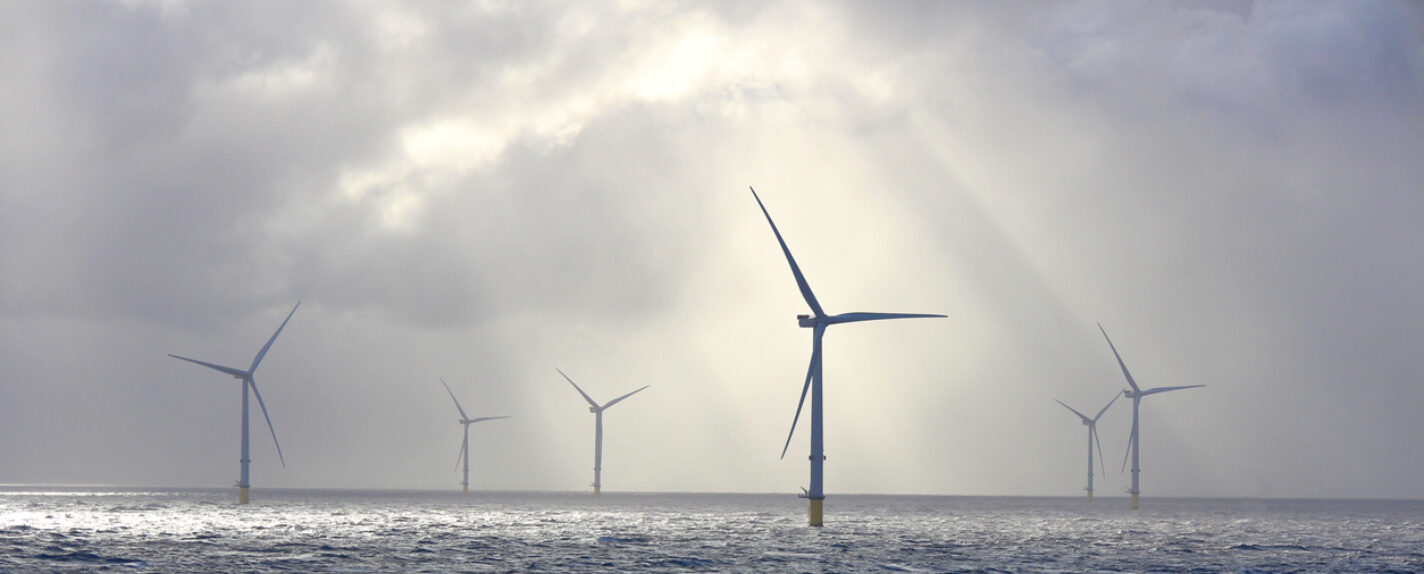Oregon Offshore Wind Faces Early Legal Challenge

Newsletter Articles
Just over a week after announcing its intent to auction off two lease sales for more than 3 gigawatts of offshore wind development off the Oregon Coast, the federal agency holding the auction faces a legal challenge arguing that it did not adequately review the potential environmental and cultural impacts of that development. The lawsuit, filed by the Confederated Tribes of Coos, Lower Umpqua and Siuslaw Indians (“Tribe”),[i] is one of more than a dozen cases now pending in federal courts challenging offshore wind projects.[ii] And it is the latest event in an already lengthy, intense planning process in Oregon that has seen local interests, Tribes, and state government push for longer timelines and additional studies that could impact the viability of offshore wind projects there.[iii]
Lawsuits have been brought against virtually every offshore wind project proposed in U.S. waters since Congress expressly authorized the Interior Department to grant leases for such projects in 2005.[iv] The Tribe’s suit in Oregon, however, is unique for its timing: the federal government has not yet held a lease sale, and years of planning and assessment still lie in wait before any wind facility construction could be approved. The Bureau of Ocean Energy Management (“BOEM”)—which leads the planning process for offshore wind—requires offshore wind developers to navigate an elaborate series of regulatory steps before obtaining authorization to proceed with such development on the nation’s Outer Continental Shelf (“OCS”). Given the preliminary stage at which the Tribe has brought its current challenge, whether the suit proceeds could turn on whether the district court believes the Tribe’s claims are ripe for adjudication. Those with an interest in offshore wind should keep a close eye on this litigation as the latest to test how environmental laws will interface with the development of wind energy on the OCS.
BOEM’s regulatory process for offshore wind
BOEM’s regulations governing its OCS Renewable Energy Program[v] include four main phases: (1) planning and analysis, (2) lease issuance, (3) site assessment, and (4) construction and operations.[vi] In the initial planning and analysis phase, BOEM engages in a wide-ranging consultative process with stakeholders, Tribes, and other federal and state agencies to ascertain whether a particular offshore region contains any OCS areas potentially suitable for wind energy leasing. The capstone of this phase is the designation of Wind Energy Areas (“WEAs”) that the Bureau finds worthy of “environmental analysis and consideration for leasing.”[vii] In the second phase, BOEM offers up portions of identified WEAs for a competitive lease sale through a Proposed Sale Notice, public comment period, and Final Sale Notice.[viii] The Final Sale Notice is BOEM’s announcement that it will auction off one or more commercial wind energy leases that grant the lessee the exclusive right to seek development approval. The leases do not, however, grant the right to construct assessment or generation facilities.[ix]
In the third phase, the lessee develops a proposed Site Assessment Plan (“SAP”) that typically calls for installation of meteorological instruments on the leasehold, as well as site characterization studies.[x] In the fourth stage, the lessee prepares and submits to BOEM a proposed Construction and Operations Plan (“COP”) for the actual offshore wind generation development, on which BOEM conducts environmental and technical reviews. BOEM then decides whether to approve, approve with modifications, or disapprove the COP.[xi]
Oregon offshore wind planning
Oregon offshore wind planning began with an intergovernmental Offshore Renewable Energy Task Force that BOEM formed with the state of Oregon in 2011.[xii] After more than a decade of initial outreach, preliminary investigation, and numerous task force meetings, BOEM formally initiated the process for identifying WEAs off the Oregon Coast by issuing a “call” in April 2022 for information and nominations for areas potentially suitable for commercial wind energy leasing on the OCS offshore the Oregon Coast.[xiii]
The following year, BOEM announced a 60-day public comment period on two draft WEAs encompassing approximately 220,000 acres between about 18 and 32 miles off the southern Oregon Coast.[xiv] In February 2024, BOEM announced the designation of two final WEAs comprising about 195,000 acres. The Coos Bay WEA is 61,204 acres in size and located 32 miles from shore; the Brookings WEA is 133,808 acres and about 18 miles from shore.[xv]
Three months later, BOEM issued a Draft Environmental Assessment (“Draft EA”) pursuant to the National Environmental Policy Act (“NEPA”) to analyze the potential environmental effects of possible wind energy-related leasing and grant issuance, site assessment, and site characterization activities within the two final Oregon WEAs.[xvi] BOEM followed up by issuing a Final EA in August,[xvii] finding that the proposed activities encompassed by its assessment would not result in significant environmental impacts (in shorthand, referred to as a “FONSI”), and therefore did not require a more thorough Environmental Impact Statement (“EIS”) under NEPA.[xviii]
The analysis in the Final EA also furnished the environmental basis for BOEM’s issuance of the proposed[xix] and final notices[xx] for the lease sales that the Tribe challenges in its complaint. The Final Sale Notice indicates that BOEM intends to hold online mock and monetary auctions to sell the leases at issue on October 10 and October 15, 2024, respectively.
The Tribe’s complaint
The Tribe presents five claims in its complaint that challenge the legal validity of BOEM’s Final EA, FONSI, and Final Sale Notice for the two Oregon offshore leases.[xxi]
Four of the claims, and the gravamen of the Tribe’s complaint, turn on alleged defects in the geographic and temporal scope of BOEM’s NEPA analysis in the Final EA. The Tribe’s NEPA claims assert that BOEM’s analysis is defective because: (1) BOEM allegedly took an overly narrow view of the Purpose of and Need for the proposed lease sales such that the range of alternatives it considered in the Final EA is improperly constrained; (2) the Final EA allegedly improperly failed to consider environmental effects of the eventual construction of offshore wind generation facilities that may occur after the lease auction (even though the leases do not authorize such construction); (3) BOEM allegedly engaged in biased decision-making and prejudged the outcome in deciding to issue the Final Sale Notice based on the Biden Administration’s announced policy goal to approve a certain minimum amount of offshore wind development; and (4) the lease sales to be auctioned off will allegedly have significant environmental effects, rendering BOEM’s FONSI arbitrary and capricious.
The Tribe’s fifth claim asserts BOEM violated the National Historic Preservation Act (“NHPA”) in issuing the Final Sale Notice for the Oregon leases by not first preparing a “programmatic agreement” under the NHPA to mitigate potential impacts to historically and cultural important resources that will ostensibly result from the leases.
The Tribe is asking the Court to declare that the Final EA, FONSI, and Final Sale Notice for the Oregon leases violate the law and to set them aside, but the Tribe does not request any specific injunctive relief to stop the lease sales from proceeding.
The initial phase of the litigation over the Tribe’s claims will likely revolve around whether they are ripe for adjudication, given that the leases at issue are framed as not to authorize any form of construction or other ocean or OCS-disturbing activities. In a recent decision, the D.C. Circuit held plaintiffs’ NEPA claims challenging the actual issuance of an offshore wind lease (which is a step beyond the issuance of a Final Sale Notice at issue here) were unripe because the lease did not constitute an irreversible and irretrievable commitment of resources to construct a wind farm.[xxii] It remains to be seen whether the District of Oregon will follow similar reasoning here and dismiss the Tribe’s complaint. However, given the nationwide trend of litigation against offshore wind development and the controversy in Oregon’s planning process to date, it is unlikely this will be the last court challenge to Oregon offshore wind development.
For more information on offshore wind or renewable energy development on public lands, contact Marten’s Renewable Energy practice group.
[i] Compl., Confederated Tribes of Coos, Lower Umpqua and Siuslaw Indians v. Bureau of Ocean Energy Mgmt., No. 6:24-cv-01558-MC (Sep. 13, 2024).
[ii] See Wayne Parry, Lawsuits Buffet US Offshore Wind Projects, Seeking to End or Delay Them, Associated Press (Sep. 19, 2024), https://apnews.com/article/offshore-wind-lawsuits-clean-energy-windmills-turbines-9258cc52b8695df7ba22d51da829b811.
[iii] See Aidan Freeman, State Role Prominent as Oregon Offshore Wind Nears Auction, Marten Law (Nov. 14, 2023), https://martenlaw.com/news/state-role-prominent-as-oregon-offshore-wind-nears-auction.
[iv] Congress first expressly authorized the Interior Department to grant leases, easements, or rights-of-way on the OCS to produce offshore wind (or, more broadly, the production, transportation, storage, or transmission of energy from sources other than oil and gas) in amendments to subsection 8 of the Outer Continental Shelf Lands Act (43 U.S.C. 1337) in section 388(a) of the Energy Policy Act of 2005 (Pub. L. 109–58).
[v] BOEM’s regulations are codified at 30 CFR Part 585.
[vi] BOEM, Wind Energy Competitive Leasing Process Fact Sheet (“Offshore Wind Process Fact Sheet”) https://www.boem.gov/sites/default/files/documents/about-boem/Wind-Energy-Comm-Leasing-Process-FS-01242017Text-052121Branding.pdf (revised May 2021).
[vii] 30 C.F.R. §585.211(b).
[viii] Id. at §§ 585.215–216.
[ix] Offshore Wind Process Fact Sheet at 2.
[x] BOEM, Renewable Energy - Site Assessment, https://www.boem.gov/renewable-energy/site-assessment. For more detail, see the guidelines that BOEM has issued on the development of SAPs for lessees. BOEM, Guidelines for Information Requirements for a Renewable Energy Site Assessment Plan (June 2019), https://www.boem.gov/sites/default/files/renewable-energy-program/BOEM-Renewable-SAP-Guidelines.pdf.
[xi] BOEM, Renewable Energy - Construction and Operations, https://www.boem.gov/renewable-energy/construction-operations. BOEM has likewise issued guidelines for COPs as well. BOEM, Information Guidelines for a Renewable Energy Construction and Operations Plan (Version 4.0) (May 27, 2020), https://www.boem.gov/sites/default/files/documents/about-boem/COP%20Guidelines_Technical_Corrections.pdf.
[xii] BOEM, Press Release: BOEMRE and Oregon Form Offshore Renewable Energy Task Force (Mar. 31, 2011), https://www.boem.gov/sites/default/files/boem-newsroom/Press-Releases/2011/press0331.pdf.
[xiii] Isabel Carey, Offshore Wind Development in Oregon: A Status Report, Marten Law (Apr. 5, 2022), https://martenlaw.com/news/offshore_wind_development_in_oregon_a_status_report; 87 Fed. Reg. 25,529 (Apr. 29. 2022).
[xiv] BOEM, Press Release: BOEM Identifies Draft Wind Energy Areas Offshore Oregon for Public Review and Comment (Aug. 15, 2023), https://www.boem.gov/newsroom/press-releases/boem-identifies-draft-wind-energy-areas-offshore-oregon-public-review-and.
[xv] BOEM, Press Release: BOEM Finalizes Wind Energy Areas in Oregon (Feb. 13, 2024), https://www.boem.gov/newsroom/press-releases/boem-finalizes-wind-energy-areas-oregon.
[xvi] BOEM, Notice of Availability of a Draft Env’t Asst. for Commercial Wind Lease Issuance on the Pacific Outer Continental Shelf, Oregon, 89 Fed. Reg. 35,220 (May 1, 2024), https://www.govinfo.gov/content/pkg/FR-2024-05-01/pdf/2024-09360.pdf.
[xvii] BOEM, Final Environmental Assessment, Commercial Wind Lease Issuance on the Pacific Outer Continental Shelf, Offshore Oregon (Aug. 2024), https://www.boem.gov/sites/default/files/documents/renewable-energy/state-activities/Oregon%20EA%20Volume%20I.pdf.
[xviii] BOEM, Finding of No Significant Impact, Commercial Wind Lease Issuance on the Pacific Outer Continental Shelf, Offshore Oregon (Aug. 18, 2024), https://www.boem.gov/sites/default/files/documents/renewable-energy/state-activities/Oregon-FONSI.pdf.
[xix] BOEM, Proposed Sale Notice, Pacific Wind Lease Sale 2 for Commercial Leasing for Wind Power Development on the Outer Continental Shelf Offshore Oregon, 89 Fed. Reg. 35,210 (May 1, 2024), https://www.govinfo.gov/content/pkg/FR-2024-05-01/pdf/2024-09391.pdf.
[xx] BOEM, Final Sale Notice, Pacific Wind Lease Sale 2 for Commercial Leasing for Wind Power Development on the Outer Continental Shelf Offshore Oregon, 89 Fed. Reg. 71,398 (Sept. 3, 2024), https://www.govinfo.gov/content/pkg/FR-2024-09-03/pdf/2024-19619.pdf.
[xxi] Compl. at 23–28, Confederated Tribes of Coos, Lower Umpqua and Siuslaw Indians v. Bureau of Ocean Energy Mgmt., No. 6:24-cv-01558-MC (Sep. 13, 2024).
[xxii] Fisheries Survival Fund v. Haaland, 858 Fed.Appx. 371 (D.C. Cir. 2021). Note that the ruling in FSF was in the D.C. Circuit, not the Ninth Circuit that encompasses the District of Oregon, and was in the form of a memorandum disposition, which even under that circuit’s rulings do not serve as binding precedent. See D.C. Cir. R. 36(e)(2) (unpublished decision carries no precedential value).
Newsletter Articles
Authors
Related Services and Industries
Authors
Related Services and Industries
Stay Informed
Sign up for our law and policy newsletter to receive email alerts and in-depth articles on recent developments and cutting-edge debates within our core practice areas.
